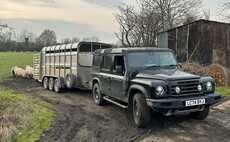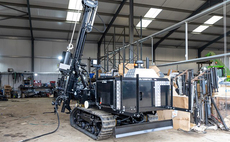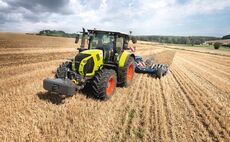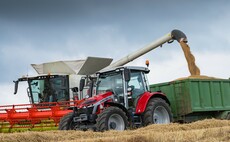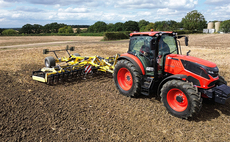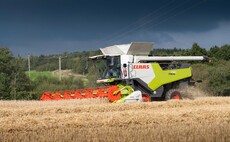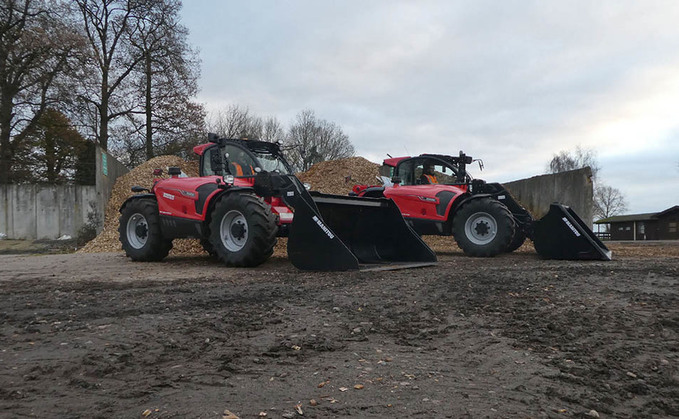
Following the introduction of new transmissions and hydraulic setups, Richard Bradley looks further into Manitou's latest telehandler offering.
Making some big changes to its bread and butter agricultural telehandlers, Manitou launched its NewAg range late last year.
Major changes focused on the cab, along with new transmission options, intelligent hydraulic packages and slicker styling.
To find out the impact these changes have on loaders, we tried out two variants of its most popular model, the MLT635.
While both shared the same capacities, the hydrostatic V+ model also featured the firm's regenerative and intelligent hydraulic packages.
CAB AND CONTROLS
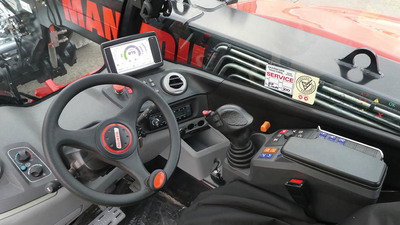
One of the major upgrades to the 635 is its new cab, designed with improved access, visibility and layout.
Despite appearing not to open far, the sturdy one-piece door hides a cut-out in the cab floor above the step. This allows you to easily swivel in and out of the cab, rather than the usual climb. The void is filled with a decent-sized door pocket when closed.
A thick rubber floor mat can be removed without need for tools, and two large bungs lie beneath it, allowing any water to be drained away.
The firm now fits a curved one-piece windscreen. To prevent roof protection bars from impeding views, each bar is angled to match the position of the boom as it is raised.
This offers unrestricted views of the headstock from ground level right to maximum lift height.
However, despite the low-mounted boom keeping views to the right clear, the large engine hood, as with most Stage 4 compliant telehandlers, restricts things somewhat.
For improved operator comfort, the joystick is mounted to the seat's armrest, along with a bank of switches.
Thanks to a CanBus connection system, the various colour coded switches are recognised by the loader's computer, meaning switches can be placed anywhere you like.
Top-spec Elite models also boast a seven-inch colour display, which features various machine settings and displays working information.
TRANSMISSIONS COMPARED
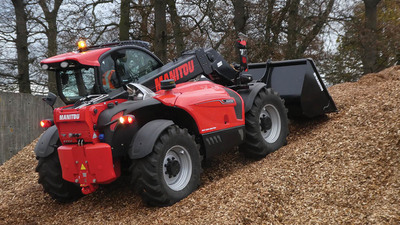
While the firm's tried and tested six-speed automatic powershift transmission is still available, Manitou now offers a hydrostatic transmission option.
This comes in the form of a twin radial-piston pump setup, which drives a ZF-sourced hydrostatic transmission, offering a 0-40kph (0-25mph) top speed in a single range.
Featuring two operating modes, this affords either precise control with slightly lethargic movements in its economy mode, or much more aggressive shuttling and quick uptake of speed in its dynamic mode.
Maximum travel speeds can be set to prevent hurtling around the yard at 40kph (25mph), and, by setting engine revs with the electric hand throttle, forward speed can be controlled independently.
For the powershift model, its six speeds can be shifted manually or automatically. Maximum gear in auto mode can also be set, and a declutch function can be switched on to dump the transmission.
This kicks in and out drive, avoiding a fight with the transmission experienced in some loaders.
Driving around the yard, both options offer decent control and uptake of speed, with the hydro having the edge when it comes to changing speed demands.
A pile of woodchip provided an opportunity to try out each variants' climbing ability.
Despite general perceptions of hydrostatic-driven machines falling short of their mechanically driven counterparts, the new Manitou transmission surprised us when climbing the steep slope.
Unlike the powershift, we did not find the hydrostatic to be revving as hard to make its way up the heap.
MLT635 130PS+/140V+ specifications
- Engine: Deutz four-cylinder, 3.6l
- Power: 129hp (130PS+), 136hp (140V+)
- Transmission: Six speed powershift (130PS+), single-range hydrostatic (140V+)
- Maximum lift capacity: 3,500kg
- Maximum lift height: 6.08 metres (20ft)
- Hydraulics: 150 litres/min (130PS+), 170 litres/min (140V+)
- Availability: Now
- Price: TBC
HYDRAULIC PERFORMANCE
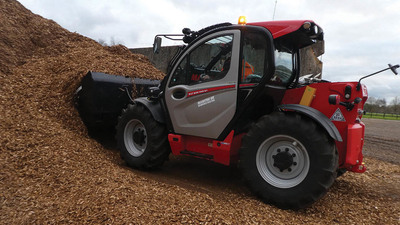
Only standard on Elite specced V+ models, regenerative and intelligent hydraulics offer a number of benefits.
With regenerative hydraulics, gravity is used to lower the boom under its own weight, instead of powering it down hydraulically. This is faster and allows oil flow to be used elsewhere, such as retracting the boom, further speeding up cycle times.
Three modes
The intelligent hydraulics system offers three modes: vertical lift; bucket shake; and return to dig; each of which can be used independently or all at once.
As the boom is raised, vertical lift mode makes sure the boom automatically extends to keep the headstock moving as close to a vertical line as possible, ideal for bale stacking duties, for example.
By fully tipping a bucket and keeping the joystick held, the bucket shake function will automatically engage, providing short sharp movements to loosen stubborn material.
Using the return to dig feature, boom height and headstock angle can be stored in the loader's computer, with the system memorising and returning the loader to its dig position once the bucket has been emptied.
Simply by pushing the stick forward, after a load has been dumped, the bucket can be returned from near full height, reach and dump to the pre-programmed position quicker than you can reverse away from the trailer or spreader.
FG VERDICT
For frequent towing and road work, the powershift still has its place. But for us, the new hydrostatic transmission is definitely our choice for yard work.
It is easier to operate and should, in theory, prove to be more efficient for this task.
If only a manufacturer could combine the benefits of a powershift and hydrostatic transmission.
It is about more than just the transmission though, and coupled with efficiency enhancing hydraulics and a well laid out cab, the firm's NewAg range, in particular the MLT635, should appeal to a wide variety of customers.



















